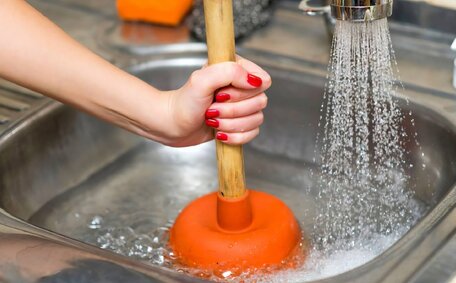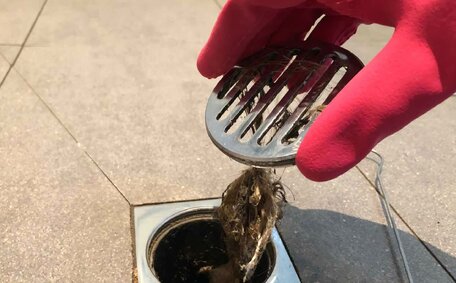Insulate Your Hot Water Tank and Pipes
There are several effective steps to insulate your hot water tank and pipes, crucial for enhancing efficiency and preventing heat loss:
- Buy fibreglass tank insulation and pre-slit foam pipe insulation that match the size and specifications of your hot water system from a hardware store.
- Prior to insulation, ensure the power to your water heater is switched off at the circuit breaker and the water intake valve is closed.
- Securely wrap the tank, using tape for reinforcement, and customise by cutting slits for pipes and valves to maintain heating efficiency.
- Fit insulation over hot and cold pipes, extending at least one metre from the heater connections, to provide thorough heat retention.
- Tape all seams snugly to ensure maximum insulation and prevent any heat loss.
- Turn power and water back on to test the storage hot water heater’s performance. The improved insulation can help retain heat within your water system, effectively enhancing the system’s ability to heat water while reducing energy usage.
Proper insulation of your gas water heater during winter reduces standby heat losses significantly, lowering energy bills considerably. It also helps maintain consistent hot water delivery temperatures. Discover more about how to prepare your plumbing for winter by insulating tanks and pipes before the cold snap.
Examine and Replace Sacrificial Anode Rod
The sacrificial anode rod is vital in protecting the tank interior from corrosion. Designed to corrode over time, the anode rod sacrifices itself to extend the lifespan of your hot water system.
Here’s what to examine when considering whether to replace your anode rod:
- Ensure the water heater power is off and the water intake valve is shut before checking for these maintenance indicators.
- Drain the tank completely, an action that can take some time. Attach a hose to the drain valve to pump water safely to a designated drainage area.
- Remove the anode rod at the top of the tank. It likely uses a 1 1/16" socket. Examine its condition - significant pitting or more than 6mm diameter reduction indicates replacement is needed.
- Seal the new anode rod threads with tape, screw it in by hand, then tighten securely with a socket wrench.
- Close the drain valve, turn the water supply back on and restore power to ensure water your tank refills appropriately. Allow the storage tank to refill with storage hot water and then inspect for any leaks.
Replacing a highly corroded sacrificial anode rod helps prevent tank failure and extend life of your system. For any doubts about inspecting or replacing your hot water system’s anode rod, our team is ready to provide professional guidance.
Test Temperature and Pressure Relief Valve
The temperature and pressure relief valve is a critical safety component that releases excess heat and pressure from the tank, averting potential hazards. This prevents explosion or overpressurization hazards. It is vital to periodically test this valve.
It’s recommended to perform these checks biannually:
- Locate the valve near the top of the water heater tank. It has a lever or button on top.
- Carefully test the release mechanism by lifting the lever or pressing the button, and see our detailed guide for more on system care.
- After releasing for 30 seconds, check that the valve reseals correctly to halt the water flow.
- Inspect that the end of the discharge pipe directly touches the floor drain to safely release T&P water.
- If no water released or valve failed to close, contact a professional to replace the faulty T&P relief valve.
Semi-annual testing of this pressure relief mechanism is imperative to help find and address safety issues, ensuring your household’s protection.
Clean and Drain Sediment from Tank
It’s essential to flush and drain your water heater regularly, especially before winter, to maintain efficiency by removing sediment. Unaddressed sediment accumulation forces your hot water system to work harder, compromising efficiency and reducing tank capacity over time. Draining the tank every 6-12 months is recommended.
Follow these key steps to properly clean and drain the tank:
- Turn off power to your electric hot water system and shut off the cold water intake valve.
- Connect a garden hose to the nearby hot water tap, diverting water through pipe outlets safely to an outdoor area.
- Open the drain valve and allow all water to go outside the tank into a bucket or drainage area.
- Check water flow for sediment once tank begins draining. Allow it to fully empty.
- Close drain valve once all water has emptied. Disconnect hose.
- Turn water supply back on and restore power to allow tank to refill. Inspect for leaks.
- Consider flushing your hot water heater lines by running all taps until the water is crystal clear.
Performing regular tank draining can help keep the system in optimal condition by removing corrosive sediment accumulation. Regular maintenance also optimises the capacity for water heating and overall system efficiency. Should you find sediment levels beyond the usual, feel free to call us for expert plumbing assistance.
Adjust Temperature Setting for Efficiency
Modify your water heater’s temperature setting before winter to improve efficiency while keeping energy consumption in check. We recommend setting the system to 49°C to enhance household energy efficiency and reduce standby heat loss.
Follow these tips to optimise efficiency:
- Check your thermostat’s current temperature setting near the bottom of the tank. Most heaters are factory set to 140°F.
- Reduce the temperature to 49°C to enhance efficiency, which is particularly beneficial for solar hot water heaters. Lowering the temperature is one of the smarter things you can do, since it provides sufficient hot water for most households and curtails heat loss amidst cold conditions.
- Further reduce to 43°C if away for extended periods to prevent scalding and minimise energy usage.
- Upon returning, restore the temperature to 49°C for continued accessibility with minimal additional cost.
Small downward adjustments within safe ranges conserve energy. Lowering your settings to a level higher than recommended can risk potential scalding and unwanted bacterial growth. Contact a professional if unsure of optimal temperature settings.
Consider Installing Flood Stop System
We advocate the installation of a flood stop system to protect water heaters in concealed locations such as attics or crawl spaces. Innovative flood stop systems swiftly detect leakage through a sensor and instantly cut off the water supply line, averting catastrophic household damage.
Key benefits of a flood stop system include:
- Also capable of preventing extensive water damage from undetected leaks
- Senses plumbing leaks at just a few drips per minute
- Automatically shuts off water flow to isolate damage
- Sends mobile alerts for remote monitoring and control
- Battery operated for protection during power outages
Considering the steep cost of water damage, equipping your hot water unit with a flood stop system offers priceless protection that effectively pays for itself. For maximum safety, Consider installing flood stop sensors by the hot water unit and other concealed plumbing components to take care of unnoticed leakage over time.
Prepare for Power Outages
Unexpected power outages during extreme weather can disrupt hot water supply. Follow these recommendations to ready your home for possible tankless water heater supply interruptions:
- Invest in a reliable emergency generator, a versatile power source that can energise gas hot water systems during unexpected electrical failures. Choose a generator adequately sized to run essential loads, including your tankless water heaters and your furnace where applicable.
- For gas hot water systems with a pilot light, maintain sufficient propane tank fuel reserves as gas lines can lose pressure during power outages.
- Insulate pipes to maintain constant flow and preserve heat during outages. Pre-drawn hot water can maintain temperatures for up to a day.
- Shut off the cold water intake valve during extended outages to preserve stored hot water reserves in the tank.
- Consider installing an insulated water heater tank blanket to enhance heat pump efficiency and limit standby heat loss.
- If feasible, drain tank water into sterilised containers before severe storms for sanitary reserve use.
Proactive measures are crucial for continuous hot water access during unexpected weather-related power disruptions. Protect critical plumbing components and establish contingency plans to endure outages.
Winterize Exposed Pipes and Faucets
Exposed water pipes and outdoor faucets are vulnerable to freezing and bursting during extreme winter weather. Learning how prevent costly pipe damage is crucial, taking preventative measures before cold temperatures set in.
Follow these key steps to winterize your exposed plumbing components:
- Keep your pipes toasty with warm air by insulating outdoor faucets and pipes using faucet insulation kits available from your local hardware store. These include faucet covers, pipe sleeves and heat tape.
- Seal any gaps, cracks or openings against exterior walls where drafts could compromise your indoor air and risk freezing the pipes. Use weather stripping and caulk as needed, particularly in a frozen area.
- Drain and shut off isolated branch lines leading outdoors to prevent water backflow from an indoor shutoff valve. Open outdoor hose bibs to allow water in the supply lines to drain out completely.
- Consider winterizing your home with an indoor valve for shutting off water to outdoor spigots during the colder months. Attach a hose blowout adapter to rapidly clear remaining water from pipes once drained.
- For undrainable pipes, a slight and steady drip of water during severe cold can help prevent freezing. This ensures things you can do to maintain flow even in chilling times.
- In a power outage where heat tape fails, wrap pipes thoroughly with insulation and plastic sheeting. Employ techniques on how thaw your pipes, such as pouring warm water over wrapped sections if possible.
Eagerly winterising vulnerable plumbing mitigates the risk of bursting pipes, which otherwise leads to extensive damaged water infrastructure. Contact your plumber immediately if you suspect any part of your plumbing system has frozen to avoid further issues.
Maintain Proper Water Pressure
It’s important to maintain a water pressure range of 345-550 kPa for your plumbing system’s efficient operation during extreme weather. Water pressure that is too high or too low can cause a variety of problems:
- Low water pressure reduces flow rates to fixtures and appliances. Investigate how frozen pipes may lead to blockages and identify appropriate remedies.
- High water pressure accelerates wear on valves, pipe joints, hoses and plumbing components. It increases the risk of leaks.
- Fluctuating pressures make temperature regulation difficult and can waste hot water.
Employ a water pressure gauge to assess line pressures and adjust accordingly. Most systems have a pressure reducing valve (PRV) located near the main shutoff valve. Adjust this PRV as needed to maintain your preferred 50-80 PSI static pressure.
Tips to regulate water pressure:
- Raise the PRV setting if pressure falls under 345 kPa.
- Lower the PRV setting if pressure surpasses 550 kPa.
- Contact a plumber if you need help locating or adjusting your PRV.
- Repair any frozen or burst pipes causing low pressure.
- Inspect PRV and replace if faulty, erratic or beyond adjustment range.
Maintaining a steady 50-80 PSI water pressure is key to preventing plumbing damage and ensuring efficiency. Monitor pressure fluctuations during extreme weather swings and regulate as required.





